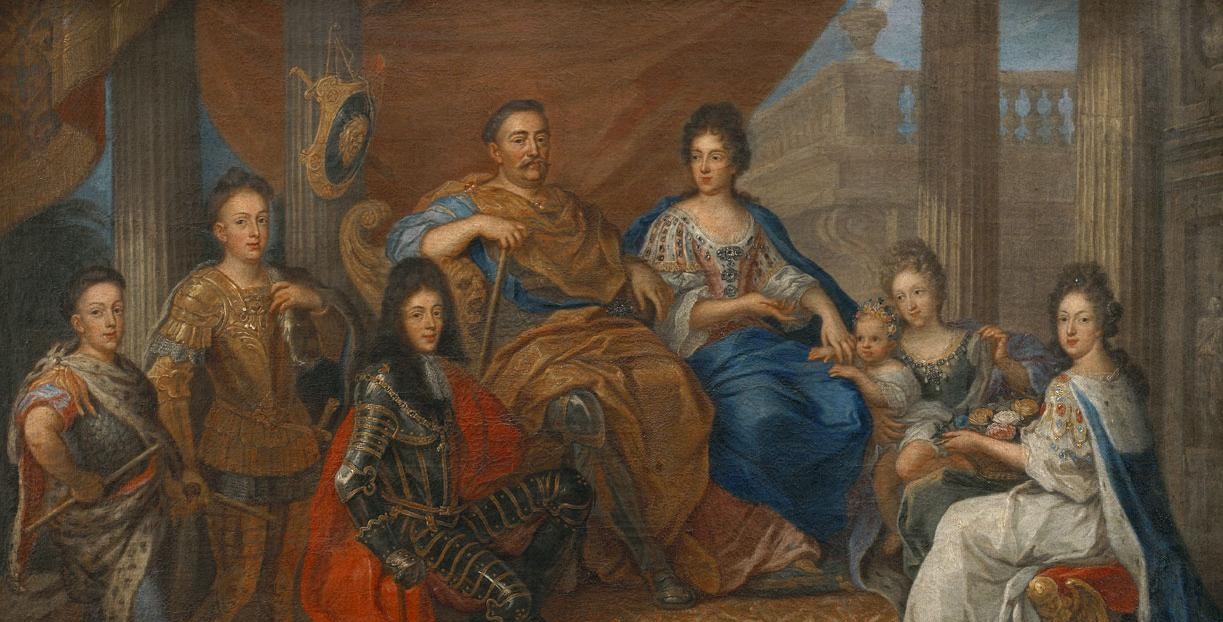A blonde, her eyes were blue, her complexion unusually white. She was not very tall, but shapely and with a delightful figure.’ Such was the description of Marie Walewska’s appearance by Napoleon’s butler. The Polish woman was to captivate the ‘god of war’ from their very first meeting. According to many researchers, Marie Walewska was the French Emperor’s most serious mistress and his relationship with her appears to have been the happiest. After parting with the Emperor, she became involved with Philippe-Antoine d’Ornano. Her descendants from this marriage went from being the aristocracy of the sword to becoming financiers and industrialists, owning, among other things, the famous cosmetics factory Sisley. The son of Marie and Napoleon, Aleksander (Alexandre) Walewski, also had a distinguished career. It is therefore worth briefly describing the fate of ‘Napoleon’s Polish wife’.
by Cezary Wołodkowicz
The girl to whom the Emperor himself succumbed
Absolutely nothing foreshadowed her spectacular fate. She was born in Kiernozia on 7 December 1786, the daughter of Maciej Łączyński (Nałęcz coat of arms) and Ewa Zaborowska. She had four siblings. For several years, Mikołaj Chopin, father of the famous composer Frederic, acted as tutor to the Łączyński children. In early 1804 (aged 18), at her mother’s insistence, she married the sixty-year-old Atanazy Walewski, a royal chamberlain. The marriage was entered into out of common sense, bringing financial stability to the family. However, it was not a successful one. Six months after the wedding, she gave birth to a son, Antoni – it is assumed that the family and Atanazy Walewski wanted to save the young girl’s honour. The boy was soon placed in the care of her husband’s sister-in-law and nieces.
In 1807, she met the man who was to change her entire life: the Emperor of the French Napoleon Bonaparte. At war with Prussia and Russia, the French leader entered Polish territory in late 1806. He wished to enlist the help of the Poles in this fight.
How did their relationship begin? It is believed that Napoleon met Marie on 1 January 1807 while a wheel of his carriage was being changed at Błonie near Warsaw. According to the Emperor’s itinerary, however, this was not possible, as he was 100 kilometres away at the time. Another version of the story is that their first meeting took place at one of the balls organised in Warsaw on 17 January 1807.

Equally contradictory information survives regarding Marie Walewska’s reaction to the Emperor’s advances and interest in her. According to one theory she was abashed and frightened, while on the other hand, some researchers claim that for the young woman, a relationship with the ‘hero of two centuries’, and the most powerful man in Europe at the time, must have been attractive and ‘boosted her ego’.
According to other versions, she was persuaded to have a relationship with the Emperor by Minister Talleyrand and Prince Józef Poniatowski. The former (who was having an affair with Poniatowski’s sister) was of the opinion that the Emperor needed a partner. Napoleon was later to say of Talleyrand: ‘his pockets were always full of girls’, suggesting the habitual nature of this service rendered by the minister. Prince Poniatowski was said to have urged Marie to devote herself to the ‘Polish cause’. She was also encouraged to do so by… her elderly spouse ‘inspired by patriotism’.
Contrary to the expectations of all those pushing for an affair, and despite the dashed hopes of Polish patriots for a more favourable outcome of the 1807 peace negotiations in Tylża, the relationship continued. Marie did not treat Napoleon merely as a path towards the independence of her homeland. The Emperor, on the other hand, continued to be enchanted by her and did not take cynical advantage of her. It proved that the relationship meant more than that for them both. Indeed, Napoleon and Marie remained lovers for years to come. And he never denied the paternity of their son or his relationship with her. Madame Walewska visited Napoleon in 1808 and also accompanied him during the 1809 campaign and even the following year, the year of his second marriage to Marie Louise.
The Emperor’s profound affectation was due to the fact that, barely a few days before the relationship began, he had learned that he was able to have children. Josephine de Beauharnais, the Emperor’s wife and his greatest love and confidante (a woman he was obsessed with), and the physician Corvisart had been wrong. The Empress’s infertility was not his fault. Napoleon could have children. This was compounded by a complicated political context. Warsaw was eagerly awaiting the arrival of the Emperor, in whom the country had placed its hopes of restoring its independence. Marie was to become an additional stimulus for the ‘Polish cause’. This love was indeed strongly connected with politics.
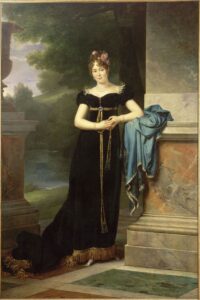
Is Napoleon capable of love?
Let us go back to January 1807. Napoleon ordered the collection of all information concerning Marie. He continually bombarded her with letters. What emerges from them is not so much the arrogance of a powerful man exerting his influence over a young girl, but anxiety and fear: ‘I have only you, I admire only you, I desire only you. Please answer quickly […].’ In another of the letters we can read: ‘Have I made you uncomfortable? I hope I may have my reasons to think otherwise. Am I mistaken? Your ardour wanes as mine grows. You do not let me sleep! Oh, give me a little happiness, a little joy […].’ Both letters were sent on the same day. They seem to represent the Emperor’s genuine feelings.
During his departure for the winter campaign of 1807, Napoleon wrote incessantly to Marie Walewska. Not only did his affection not diminish, it actually grew. This was also evidenced by letters to his older brother, Joseph, in whom he confided his feelings. At the same time, the Emperor began to write letters to Josephine that were increasingly dry in tone. For the first time, his upset at her attitude was seeping into them. It likely also testified to the disappointment caused by the fact that Josephine could not give him an heir.
In early spring, Marie joined Napoleon at Kamieniec Suski. The entire staff then witnessed his satisfaction at the fact that she had not only decided to undertake a difficult journey but, above all, that she had abandoned her numerous admirers in Warsaw for him.
In 1808, Napoleon brought Mrs Walewska to Paris, where he bought a house for her on Quai Voltaire, on the left bank of the Seine. Jealous of the Polish woman, Josephine pushed onto her husband the most beautiful courtesans, yet he was not interested. Napoleon would even take walks incognito in Paris with Marie. It was then, according to some researchers, that he began to think about divorcing Josephine, not only for political reasons, but precisely for internal and emotional ones. It turned out that the empress was not the Emperor’s irreplaceable confidante.
During the war with Austria, Marie Walewska joined the Emperor in Vienna in July 1809. The romance revived. They spent every afternoon together. In September, it became clear that Marie was pregnant with the Emperor. Walewska returned to Walewice, where she gave birth to their son, Alexandre, on 4 May 1810. It is worth noting at this point the chivalrous behaviour of her husband. Atanazy not only acknowledged the boy as his son, but went so far as to personally report him to the priest.
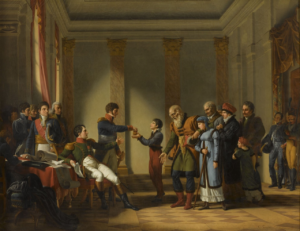
The Emperor took good care of Marie and their son. As soon as he learned of the birth of his offspring, he sent Marie a substantial sum of money and, still in 1810, brought them to Paris, where he offered Marie herself a palace and his son a vast estate to be managed exclusively by Walewska until his age of majority. As a gift on his second birthday, Alexandre received an estate in the Kingdom of Naples, yielding 170,000 francs a year, as well as the title of Count of the Empire.
Financially secure, Marie applied in Warsaw for the annulment of her marriage to Anastazy Walewski, allegedly contracted under duress by her mother and brother Benedykt. In August 1812, she obtained a divorce. A few months later, she left for Paris. She was unable to meet the Emperor in 1813 due to his campaign and defeat. However, she did not forget him. In 1814, she visited the Emperor already in exile, on Elba, even offering him some of her jewellery. She also saw him during the famous Hundred Days, before his departure for England. It was to be their final meeting.
Yet between 1812 and 1813, another Frenchman appeared in her life; Napoleon’s young relative Philippe-Antoine d’Ornano, a dragoon colonel, who was madly in love with her. Their relationship was to become closer, according to their descendant’s memoirs, precisely in 1812, a dramatic time for the Emperor. In the following year, they were already in constant correspondence. While on the battlefields of Germany, d’Ornano wrote to her on 2 May 1813: ‘I am deeply grateful to you not only because you have been willing to receive me with such charming grace and devote your time to me; the affection you inspire in me makes me all the more indebted to you. Should you never reciprocate it, may it at least allow me to experience hours of unspeakable sweetness, since no more can be asked of me… I shall wait…’ On 20 June, Marie replied as follows: ‘[…] I also keep the best possible memory of these weeks. They strengthen our friendship. To them I owe your kind letter and the pleasure I take in writing to you.’
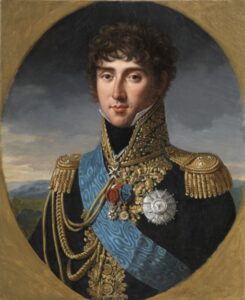
Madame d’Ornano
From 1813, Marie began residing permanently in Paris. In 1814, Philippe-Antoine commanded part of the guard cavalry that defended the French capital. Taking advantage of this fact, he visited her at her palace almost daily. Their intimacy grew. D’Ornano then proposed, but Marie refused. It was not until 1815, after the death of Atanazy, that she became engaged to the young general. On 7 September 1816, they were married in Brussels, the reason being that, during the Hundred Days, d’Ornano had sided with Napoleon.
Although he did not take an active part in the campaign because of the duel, he was exiled by the Bourbons. In June 1817, Walewska’s third son, Rudolf-August d’Ornano, was born. Unfortunately, their happiness did not last long. Six months later – on 11 December 1817 – Marie Walewska died in Paris from kidney stones, surrounded by her sons and loving husband. A snow blizzard was raging outside. She was just 31 years old. The tomb containing her heart is in the Ornano family chapel in the Pere-Lachaise cemetery in Paris. Her body, on the other hand, was laid to rest in 1818 in a crypt in her home village of Kiernozia, in accordance with the wishes of the deceased.
Philippe d’Ornano outlived her by 46 years, but never remarried. In later years, during the reign of Napoleon III, he became Marshal of France.
Her contemporaries did not leave behind any negative reports concerning Marie Walewska. The memoirists emphasised her devotion to the Emperor and her support of him in difficult times, as well as her hospitality to the Polish participants in the Napoleonic epic, as Marian Brandys mentioned in his excellent book on the Chevau-légers.
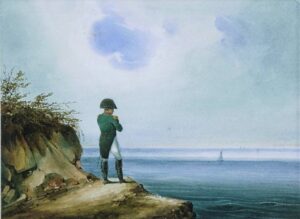
Post mortem
After her death, the Polish woman became the a protagonist of numerous books on the Emperor’s romances and sometimes biographies. It is known that she left behind diaries, but her descendants have not yet made them available to researchers.
She also found her way into cinema, becoming the title character in Edward Puchalski’s 1914 film, Clarence Brown’s 1937 film (in which she was played by Greta Garbo herself), Leonard Buczkowski’s 1966 film (Beata Tyszkiewicz) and Jonathan Alwyn’s 1974 film (Catherine Schell).
While Buczkowski’s unpretentious comedy is well known in Poland, with excellent roles by Gustaw Holoubek and the aforementioned Beata Tyszkiewicz, it was the screen adaptation of Antoni Gąsiorowski’s novel Pani Walewska entitled Conquest from 1937 that had the most interesting backstory. The film was to be a box-office success. However, neither the large budget nor the magic of Greta Garbo and Charles Boyer were of any use. The filmmakers did not have an idea for the film. There were no on-location shootings, and scenes were shot in settings meant for other films. The crew themselves, including another 17 scriptwriters, were so fed up with the project that they founded the ‘Walewska-Must-End-Association’. Nevertheless, the charm of the Napoleonic legend rendered the film popular in Europe. However, in the United States, quite against MGM’s plans, it became the biggest mishap of the ‘roaring lion’ in the 1920–1949 period. Not even an Oscar nomination helped.
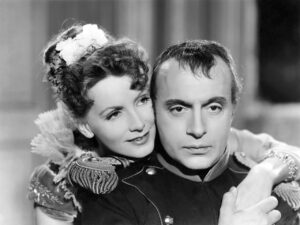
It is worth devoting a few words to Marie and Napoleon’s son, Alexandre. Count Colonna-Walewski took part in the November Uprising and received the Golden Cross of the Virtuti Militari in 1831. Subsequently, he lived in France. In 1833, King Louis-Philippe granted him French citizenship. Initially, Alexandre followed his father’s path and chose a military career, serving for a time in the Foreign Legion.
In 1835, he returned to France, where he became a popular journalist and political columnist. He founded the political magazine Messager des Chambres. It proved so popular that Louis Adolphe Thiers himself, later Prime Minister of France, bought it from him.
From 1840, he found himself in the diplomatic service and, before long, demonstrated great talent in this field. Louis-Philippe began sending him to Egypt and other non-European capitals. After his cousin Napoleon III took over, Alexandre became French ambassador to Spain and Britain. In Albion, he achieved remarkable success. Namely, he succeeded in obtaining Queen Victoria’s recognition of the newly formed Second Empire. In 1855, he became foreign minister. A year later, he chaired the Paris Conference that followed the Crimean War and where the treaty ending the war was signed on 30 March 1856. However, he quarrelled with Napoleon III, reportedly jealous of his distant cousin’s talents, and resigned as a result. In 1863, he took up the ministerial post for culture and the arts. Several years later, just before his death, he was elected a full member of the Academy of Fine Arts in Paris. He died suddenly of apoplexy in Strasbourg during a family trip.
Author: Cezary Wolodkowicz
Translation: Mikołaj Sekrecki




